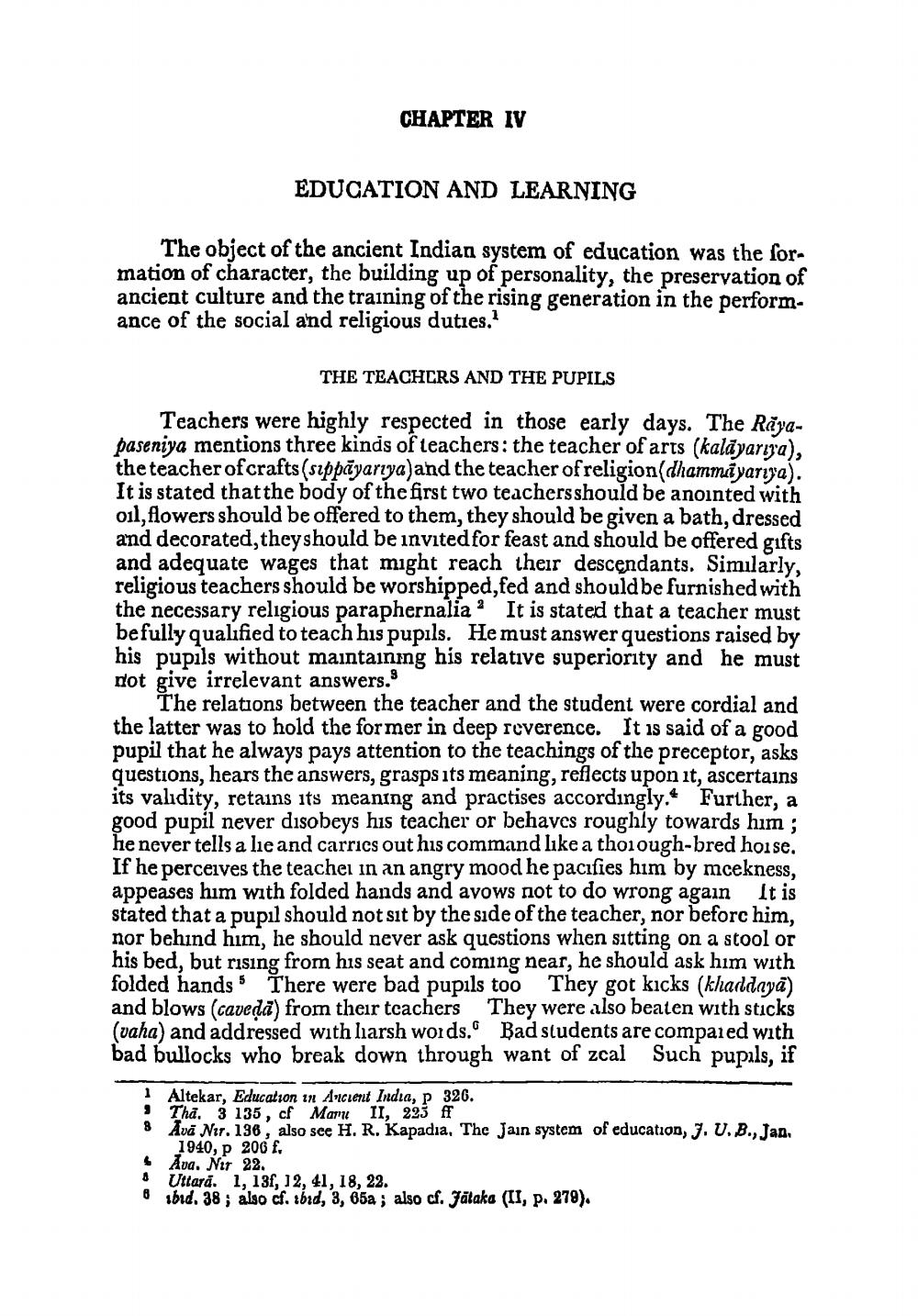________________
CHAPTER IV
EDUCATION AND LEARNING
The object of the ancient Indian system of education was the form mation of character, the building up of personality, the preservation of ancient culture and the training of the rising generation in the performance of the social and religious duties.
THE TEACHCRS AND THE PUPILS
Teachers were highly respected in those early days. The Rõyapaseniya mentions three kinds of teachers: the teacher of arts (kalāyarıza), the teacher of crafts (suppāyarıya and the teacher of religion(dhammalyariya). It is stated that the body of the first two teachers should be anointed with oil, flowers should be offered to them, they should be given a bath, dressed and decorated, they should be invited for feast and should be offered gifts and adequate wages that might reach their descendants. Similarly, religious teachers should be worshipped,fed and should be furnished with the necessary religious paraphernalia 2 It is stated that a teacher must befully qualified to teach his pupils. He must answer questions raised by his pupils without maintaining his relative superiority and he must not give irrelevant answers.
The relations between the teacher and the student were cordial and the latter was to hold the former in deep reverence. It is said of a good pupil that he always pays attention to the teachings of the preceptor, asks questions, hears the answers, grasps its meaning, reflects upon it, ascertains its validity, retains its meaning and practises accordingly. Further, a good pupil never disobeys his teacher or behaves roughly towards him; he never tells a lie and carries out his command like a thoiough-bred hoise. If he perceives the teachei in an angry mood he pacifies him by mcekness, appeases him with folded hands and avows not to do wrong again It is stated that a pupil should not sit by the side of the teacher, nor beforc him, nor behind him, he should never ask questions when sitting on a stool or his bed, but rising from his seat and coming near, he should ask him with folded hands. There were bad pupils too They got kicks (khaddaya) and blows (caveda) from their tcachers They were also beaten with sticks (vaha) and addressed with liarsh words. Bad students are compared with bad bullocks who break down through want of zcal Such pupils, if
1 9 8
Altekar, Education in Ancient India, P 326. Tha. 3 135, cf Maru II, 223 ff Ava Nir. 136, also see H. R. Kapadia, The Jain system of education, J. U.B., Jan.
1940, p 206 f, Ava. Nur 22. Uttara. 1, 13, 12, 41, 18, 22. ibid. 38; also cf. ibid, 3, 05a ; also cf. Jātaka (II, p. 279).
4
8




